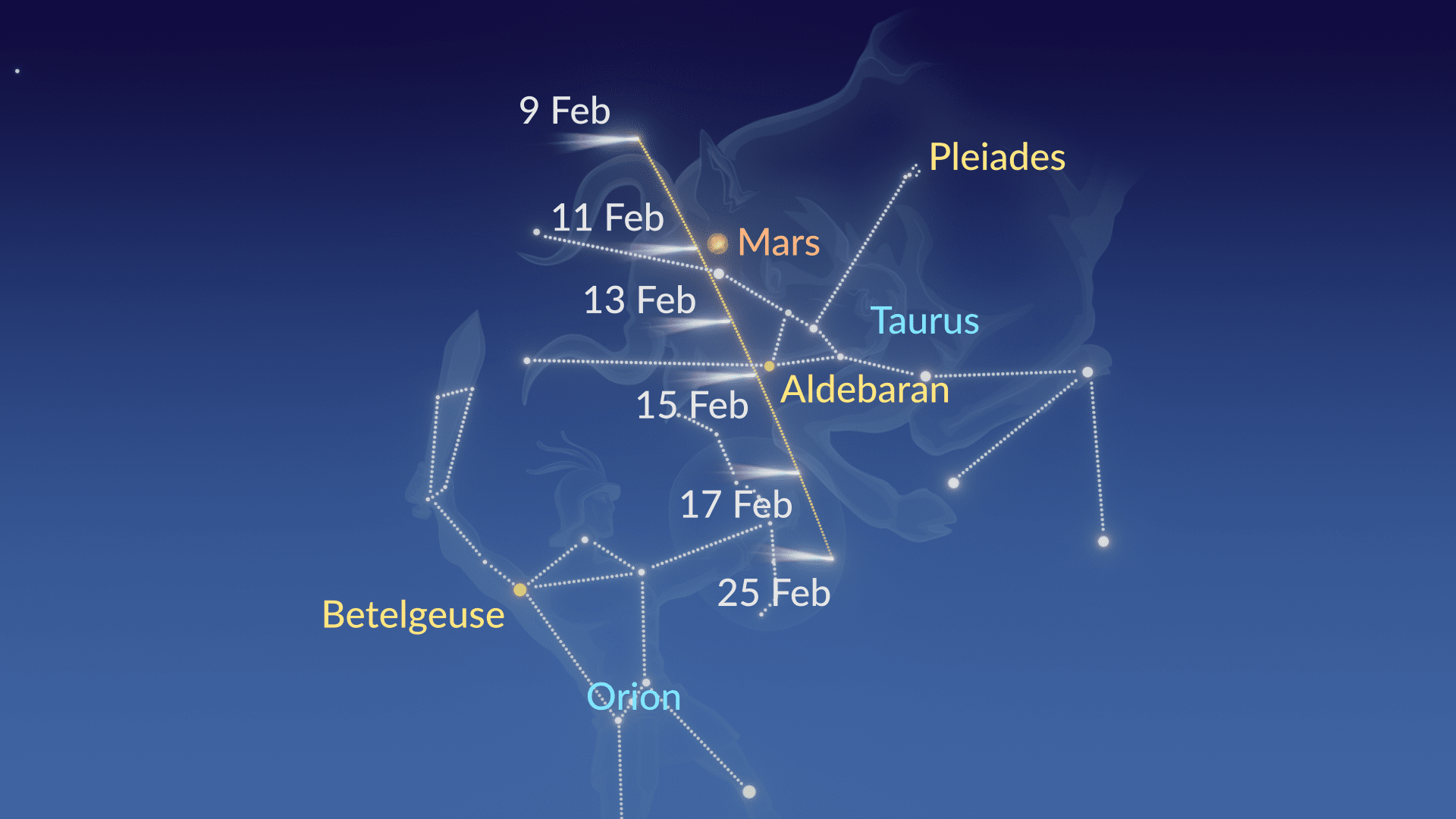When Is the Next Comet: Comets 2024 Schedule
In 2024, multiple comets will reach perihelion and gain maximum brightness. Some of them might become observable through binoculars or even with the naked eye! In our list, we included only the comets that are expected to reach a magnitude of 10 or brighter. All of them can be easily found in the sky with the help of our Sky Tonight app — we’ll tell you how at the end of this article.
Contents
- C/2021 S3 (PanSTARRS)
- 12P/Pons-Brooks ⭐
- 13P/Olbers
- C/2023 A3 (Tsuchinshan-ATLAS) ⭐⭐⭐
- 333P/LINEAR
- How to find a comet using Sky Tonight?
- Bottom line
C/2021 S3 (PanSTARRS)
- Perihelion: February 14, 2024 (mag 10)
- Closest approach to Earth: March 14, 2024 (mag 10)
- Where to observe: Both hemispheres
- Visibility forecast: You’ll require large binoculars or a small telescope to see the comet C/2021 S3 (PanSTARRS) in February and March 2024.
- Description: C/2021 S3 (PanSTARRS) is a short-period comet discovered on September 24, 2021, by the Pan-STARRS 2 telescope at Haleakala Observatory, Hawaii, USA.
12P/Pons-Brooks ⭐
- Perihelion: April 21, 2024 (mag 4.2)
- Closest approach to Earth: June 2, 2024 (mag 6.3)
- Where to observe: Northern Hemisphere (before perihelion), Southern Hemisphere (after perihelion)
- Visibility forecast: Comet Pons-Brooks might become one of the brightest of the year. During the perihelion in April, it might be visible to the naked eye in a dark sky. In June, when the comet is closest to the Earth, you should be able to see it with small binoculars.
- Description: Comet Pons-Brooks is a Halley-type comet discovered in 1812 by Jean-Louis Pons and spotted again in 1883 by William Robert Brooks. It has an orbital period of 71 years and is one of the brightest known periodic comets.
13P/Olbers
- Perihelion: June 30, 2024 (mag 7.5)
- Closest approach to Earth: July 20, 2024 (mag 7.6)
- Where to observe: Northern Hemisphere
- Visibility forecast: In June and July, the comet 13P/Olbers might become visible with small binoculars.
- Description: 13P/Olbers is a Halley-type comet discovered by Heinrich Olbers in 1815. It has an orbital period of 69 years.
C/2023 A3 (Tsuchinshan-ATLAS) ⭐⭐⭐
- Perihelion: September 27, 2024 (mag 0.2)
- Closest approach to Earth: October 12, 2024 (mag -0.9)
- Where to observe: Southern Hemisphere (before perihelion), Northern Hemisphere (after perihelion)
- Visibility forecast: Comet Tsuchinshan-ATLAS has the potential to become exceptionally bright and earn the title of a “great comet”. In September and October, it might become visible to the naked eye and rival the luminosity of the brightest stars in the sky! Read our article to get a detailed guide on observing Comet Tsuchinshan-ATLAS.
- Description: C/2023 A3 (Tsuchinshan–ATLAS) is a comet from the Oort cloud discovered by the Purple Mountain Observatory on January 9, 2023, and independently found by the ATLAS astronomical survey on February 22, 2023.
333P/LINEAR
- Perihelion: November 29, 2024 (mag 9.8)
- Closest approach to Earth: December 9, 2024 (mag 10)
- Where to observe: Both hemispheres
- Visibility forecast: In November 2024, the comet might become visible through large binoculars or a small telescope.
- Description: 333P/LINEAR is a Jupiter family periodic comet discovered by the LINEAR project in 2007. The comet has a retrograde orbit and an orbital period of 8.7 years.
How to find a comet using Sky Tonight?
Comets are faint and fuzzy objects that are hard to detect, so it’s best to know their location for certain. The Sky Tonight app will help you quickly find any bright comet in the sky. Here’s what you need to do:
- Tap the magnifier icon at the lower part of the screen;
- In the Search field, enter the comet’s name or designation (for instance, “C/2023 A3”);
- Find the comet in the search results and tap the blue target icon next to its name;
- The app will show the comet’s current location in the sky;
- Point your device at the sky and follow the white arrow to find the comet.
You can also tap the comet’s name in the search results and then go to the Events tab to view the events related to the comet: perihelion and closest approach to Earth. Tap the blue target icon next to the event to see the comet’s location at the time of perihelion or closest approach.
Bottom line
The brightest comets of 2024 that you might see with the naked eye include C/2023 A3 (Tsuchinshan-ATLAS) and 12P/Pons-Brooks. Comet Tsuchinshan-ATLAS is particularly promising as it might become a “great comet” and reach the magnitude of the brightest stars! To find out any comet's location and current visual magnitude, use the Sky Tonight astronomy app.
While working on this article, we used data provided by the Comet Observation database, TheSkyLive website, as well as by astronomers Gideon van Buitenen and Seiichi Yoshida.




